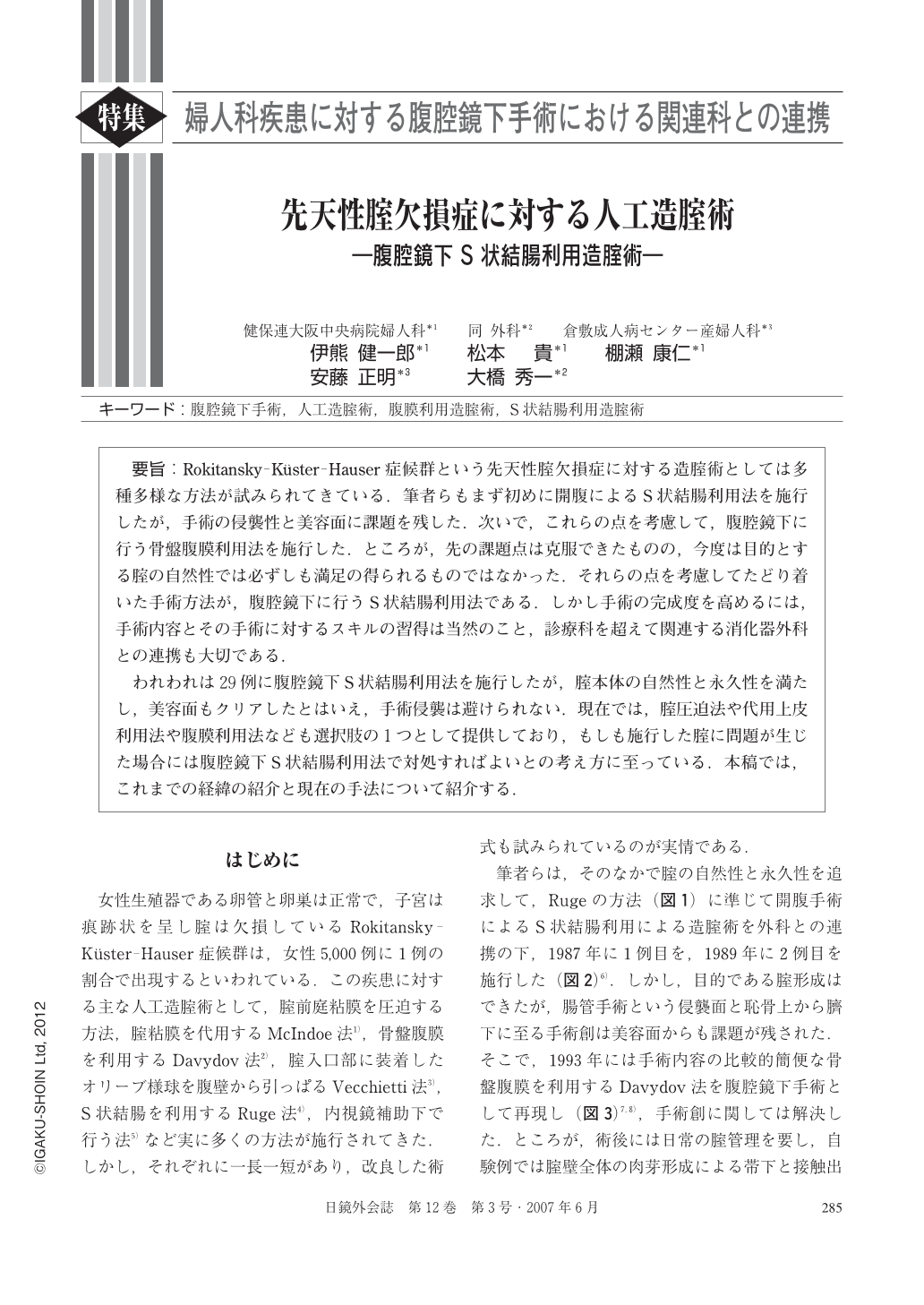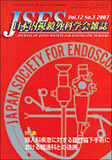Japanese
English
- 有料閲覧
- Abstract 文献概要
- 1ページ目 Look Inside
- 参考文献 Reference
要旨:Rokitansky-Kuster-Hauser症候群という先天性腟欠損症に対する造腟術としては多種多様な方法が試みられてきている.筆者らもまず初めに開腹によるS状結腸利用法を施行したが,手術の侵襲性と美容面に課題を残した.次いで,これらの点を考慮して,腹腔鏡下に行う骨盤腹膜利用法を施行した.ところが,先の課題点は克服できたものの,今度は目的とする腟の自然性では必ずしも満足の得られるものではなかった.それらの点を考慮してたどり着いた手術方法が,腹腔鏡下に行うS状結腸利用法である.しかし手術の完成度を高めるには,手術内容とその手術に対するスキルの習得は当然のこと,診療科を超えて関連する消化器外科との連携も大切である.
われわれは29例に腹腔鏡下S状結腸利用法を施行したが,腟本体の自然性と永久性を満たし,美容面もクリアしたとはいえ,手術侵襲は避けられない.現在では,腟圧迫法や代用上皮利用法や腹膜利用法なども選択肢の1つとして提供しており,もしも施行した腟に問題が生じた場合には腹腔鏡下S状結腸利用法で対処すればよいとの考え方に至っている.本稿では,これまでの経緯の紹介と現在の手法について紹介する.
The various techniques to create neovagina for congenital vaginal atresia or Rokitansky-Kuster-Hauser syndrome have been attempted and well documented. Initially, we used an isolated segment of the Sigmoid colon for creating the neovagina via the laparotomy approach. However, operative morbidity as well as the problem of a poor cosmetic result were issues which needed to be resolved with this procedure. To find a better method, we decided to try a number of other techniques but found each had its intrinsic unresolvable problems. To solve the problem of invasiveness, we began the laparoscopic Davydov technique in which we use the extended pelvic peritoneum as the lining of the neovagina. Although the technique is less invasive compared to first method, the function and appearance of the vaginal of the vagina is not natural. Also there is the problem of vaginal shrinkage.
We reached the conclusion that laparoscopic placement of a sigmoidal segment would be the best approach. The technique does not vary much from our initial open approach, so it maintains all of those positive attributes while also being minimally invasive. To make the procedure a success, it is best to collaborate with a general surgeon. It is also important to master the necessary surgical skills for laparoscopy. We performed this laparoscopic counterpart procedure in 29 cases. Although we cleared the several hurdles such as permanency, naturality and cosmesis, we found that we could not avoid operative morbidity even by employing laparoscopy. From now on, our tactic is to use a less invasive method like the Frank method or use an artificial mesh or a segment of the extended pelvic peritoneum as a lining of the neovagina. Should contraction or shortening occur, we intend to manage this by using the sigmoid segment laparoscopic technique. In this chapter, we will discuss the course of the change of our strategy and our updated technique.

Copyright © 2007, JAPAN SOCIETY FOR ENDOSCOPIC SURGERY All rights reserved.


